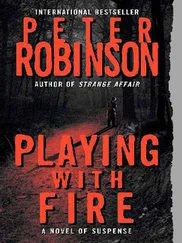Charles Gannon - Fire With Fire
Здесь есть возможность читать онлайн «Charles Gannon - Fire With Fire» весь текст электронной книги совершенно бесплатно (целиком полную версию без сокращений). В некоторых случаях можно слушать аудио, скачать через торрент в формате fb2 и присутствует краткое содержание. Жанр: Космическая фантастика, на английском языке. Описание произведения, (предисловие) а так же отзывы посетителей доступны на портале библиотеки ЛибКат.
- Название:Fire With Fire
- Автор:
- Жанр:
- Год:неизвестен
- ISBN:нет данных
- Рейтинг книги:3 / 5. Голосов: 1
-
Избранное:Добавить в избранное
- Отзывы:
-
Ваша оценка:
- 60
- 1
- 2
- 3
- 4
- 5
Fire With Fire: краткое содержание, описание и аннотация
Предлагаем к чтению аннотацию, описание, краткое содержание или предисловие (зависит от того, что написал сам автор книги «Fire With Fire»). Если вы не нашли необходимую информацию о книге — напишите в комментариях, мы постараемся отыскать её.
Fire With Fire — читать онлайн бесплатно полную книгу (весь текст) целиком
Ниже представлен текст книги, разбитый по страницам. Система сохранения места последней прочитанной страницы, позволяет с удобством читать онлайн бесплатно книгу «Fire With Fire», без необходимости каждый раз заново искать на чём Вы остановились. Поставьте закладку, и сможете в любой момент перейти на страницу, на которой закончили чтение.
Интервал:
Закладка:
Caine looked into the forest: yes, they were locals .
Chapter Nine
ODYSSEUS
Caine shifted the A-frame, ran a wet forearm across his more-wet brow, checked his watch: three hours until sunset and he was still playing follow-the-leader with the local. How long is this going to go on?
Caine could have spat at himself: as long as it takes, asshole. This is first contact: not something you fit into a convenient slot on your busy day-planner. He pushed on-
— and emerged onto a trail. An actual, groomed foot path, a little wide, by human standards. It would have been invisible had he not been looking for it: no visible damage to the surrounding vegetation, yet no growth in the harder-packed dirt, or starting up from the sides of stones worn smooth and flat. Weeds never got a chance to grow here.
Caine pulled out his palmtop, patched into the rudimentary GPS net, synced it to the survey maps, and as he waited for the machine to orient itself, he looked up and down the trail.
About ten meters to the left-roughly to the south-there was a broken vine: snapped clean, the two dusty-rose-colored cross sections stared at him like a pair of bright, pupilless eyes. Okay, that way then.
The palmtop flashed readiness: the broken vine was, in fact, due south. Just a kilometer further west-although he couldn’t see it through the canopy-was the foot of the nearest mountain. The local had been pushing in that direction until he reached this north-south trail. Caine zoomed out from the map, tapped the stylus on his current location, then again on the main ruins at the extreme southern edge of the screen, made a range inquiry. 102.4 kilometers. Altitude increase of 345 meters. He turned the palmtop off to save the batteries, looked south. Okay, so you want me to follow you south. Back the way I came. Are you trying to get me to go away, to return to my start point? Or do you think I’m lost and you’re trying to help me find my way back home? Or do you have something else in mind?
Caine slipped the palmtop back into his chest pocket, hefted the A-frame higher up onto his shoulders: only one way to find out. He started south.
Less than a kilometer further on, the footpath split. The main trail, marked by a broken tuber, was still visible, although somewhat less distinct; it angled gently to the right, up into the hills. The other path was new, almost invisible: it was the faintest hint of parted foliage-barely a game trail. It veered sharply to the left, back east toward the river. Five meters down that trail, through two layers of overhanging mosses, Caine caught a glimpse of yet another cleanly-snapped tuber.
I’m to follow both paths. Hmm. A tour of the local highlights.
He pulled out the palmtop, marked the position on the GPS map overlay, moved up the main trail to the right.
He had covered about a kilometer-could see the steep, green sheltering slope through the gaps in the canopy-when the path widened and then disappeared around an outthrust spur of the mountain. Caine followed in that direction-and stopped as he turned the corner of the moss-mottled stone ridge.
The structure-cut out of the natural rock-would have been invisible to scans. Its density and smooth outlines were consistent with, and blended directly into, the skirts of the mountain. Steps radiated out and down from a broad, out-curving esplanade. Tiers cut into either side of the rocky shoulders hemmed it in: an amphitheatre of some kind.
Caine looked behind: nothing was following him-at least nothing he could see. He turned back toward the structure, noting the squat obelisks that followed the curved lip of the esplanade like low, roofless pillars. He approached slowly, resisted an impulse to unsling his rifle, saw hints of galleries in the shadows at the rear of the raised floor of the arena, cut back into the mountain itself.
He stopped at the base of the stairs, uncertain, noted that the hair along his brow had become more damp. Why so anxious? Look: nothing lives here, nothing has for thousands of years. And if the local wanted you dead, you’d have been led into a deadfall pit or some other trap an hour ago. You’re supposed to see this, which means you’re probably safer now than any time since you landed in this valley. So why the jitters? Caine looked at the outthrust arc of the broad stairs, each riser almost half a meter in width, and then up at the squat obelisks. Because it’s strange, alien-looking: not like the mini-Acropolis back at Site One. And because- he looked around again- because there are no weeds. None of the stones have fallen-or, if they have, they’ve been removed. Maybe the locals- caretake this place…?
The locals provisionally rose higher on Caine’s ad hoc scale of cultural complexity. Did they remember that these were the creations of their ancestors? Did they have a sense of history that strove to reach back into such a distant past? If they did, they were not so very different from some of the more remote tribes of Earth, only a century ago.
Caine took out his photographic equipment slowly, as if a sudden movement would startle the stones, would scare the- well, what do I call this? The ruins? No; not the right word. The memorial? The historical preserve? Whatever it was, “ruin” was not the correct label: that term suggested the wear of ages and of neglect. This structure was, admittedly, time-worn-but there was no sign of neglect.
He measured the steps, so strangely broad and low; each one was between fifty and fifty-one centimeters wide, but only ten centimeters high. And they were not “built”: like everything except the ring of low obelisks, they had been hewn from the native rock. Caine traversed the floor of the arena, hearing the whisper of his boots bounce back from the rock that rose up on either side, stopped in front of the rear galleries. Again, a strange architecture: the walls that faced out into the arena had been cut through, converted into openworks of intricate filigree patterns. The two doorways that led into the cavelike chamber beyond were ovate, narrowing up into a peak.
Caine recorded and measured and inspected the site for ten minutes, checked his watch, and discovered his perceptual error: he had been here for almost an hour. He had ninety minutes-at most-before the sun started to set, and he still had the second, smaller trail to explore. He hastily stuffed his sensors and photographic gear into the top of his backpack and jogged away from the structure.
Having been in all its chambers, he knew there was no one in the structure watching him as he left. But that didn’t diminish the sense that timeless eyes were fixed unblinkingly upon his spine as he disappeared back into the jungle.
After reaching the narrow, newer trail, he followed it for five hundred meters and then stopped: up ahead, there was a break in the canopy, large enough to let in a considerable volume of Delta Pavonis’ fading honey-colored rays. Caine took another dozen steps, glad for the opportunity to enjoy standing in some bright, unobstructed light. His day-end fantasies concocted a convenient shelf of rock, handy kindling, a campfire: all so real he could almost smell it-
He could. He could smell it. Burned wood, or plants-like a grass fire.
He unshouldered the rifle and moved off the trail, but kept it in sight, ten meters to his left. He edged forward, paralleling it as the canopy thinned and the light grew-and revealed a broad, open circle of dirt. What the hell-?
Hell. Yes, hell would smell like that. It wasn’t just the odor of burnt grass: it was meat, too. But not cooked: incinerated. He did not sweat, but felt his temples pulsing hard and fast: it was a different species of terror than he had felt while facing down a charging Pavonosaur. This was a sharp, cold wariness-because any bush could hide death, and any thicket could conceal the worst foe of all:
Читать дальшеИнтервал:
Закладка:
Похожие книги на «Fire With Fire»
Представляем Вашему вниманию похожие книги на «Fire With Fire» списком для выбора. Мы отобрали схожую по названию и смыслу литературу в надежде предоставить читателям больше вариантов отыскать новые, интересные, ещё непрочитанные произведения.
Обсуждение, отзывы о книге «Fire With Fire» и просто собственные мнения читателей. Оставьте ваши комментарии, напишите, что Вы думаете о произведении, его смысле или главных героях. Укажите что конкретно понравилось, а что нет, и почему Вы так считаете.











